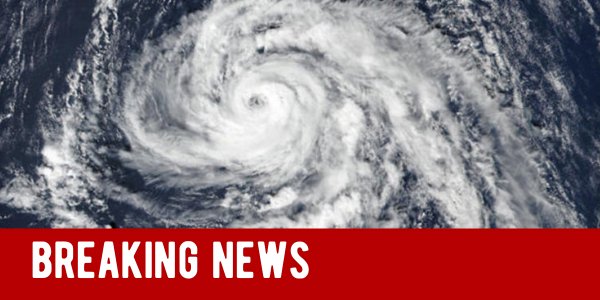BREAKING: Ireland, Scotland To Be Hit By Hurricane Ophelia On Monday

Image Credit: NASA
By Amanda Froelich Truth Theory
Residents in Ireland, Scotland and parts of Portugal and Spain are preparing to be hit by Hurricane Ophelia on Monday. According to officials in Ireland — where the damage is expected to be the worst, schools have already closed and coastal regions are prepared for flooding and power outages.
CNN reports that Ophelia is the farthest east a major hurricane has ever traveled in the Atlantic. As of Sunday, the hurricane accelerated to the United Kingdom, increasing its speed from 35 mph to 38 mph. The hurricane’s strength is expected to weaken at landfill, but damage will still be caused. A weather advisory said, “Preparations to protect lives and property should be rushed to completion by this afternoon.”
On Sunday, Ophelia weakened from a Category 3 to Category 2 hurricane, sustained winds of 105 mph. Hurricane-force winds are on track to arrive by Monday afternoon, however, spreading inland into Monday night. “Wind speeds atop and on the windward sides of hills and mountains are often up to 30% stronger than the near-surface winds indicated in this advisory, and in some elevated locations could be even greater,” the National Hurricane Center said.
11am (1500 UTC) Key Messages on #Ophelia. Strong winds and heavy rain likely over Ireland and the UK beginning Monday morning. pic.twitter.com/KEovIGbAV3
— NHC Atlantic Ops (@NHC_Atlantic) October 15, 2017
In total, Ophelia will produce 2 to 3 inches of rains, with isolated totals close to 4 inches. The NHC warned: “A dangerous storm surge is expected to produce significant coastal flooding near and to the east of where the center makes landfall. Near the coast, the surge will be accompanied by large and destructive waves.”
A few factors of Hurricane Ophelia are curious, such as the hurricane intensifying in what’s “normally a much cooler region of the Atlantic Ocean, said CNN Metereologist Allison Chinchar. In Northern Ireland, Ireland and Scotland, gusts of wind could reach 80 mph. Coastal regions in Portugal and Spain may witness 56 mph winds.
Because of this, Ireland’s National Meteorological Service issued a red wind warning for a handful of counties. It said the storm could bring winds “potentially causing structural damage and disruption, with dangerous marine conditions due to high seas and potential flooding.”
The timing, location, and a few other odd factors have prompted some to theorize that climate change is exacerbating natural disasters — as scientists have been predicting for several years now. Hopefully, civilians in Scotland and Ireland take heed and find shelter as the storm blows over. For everyone else, it is important to continue sending aid to locations affected by Hurricanes Irma, Jose, Harvey and Katia, and to adopt sustainable habits which reduce carbon emissions and, hopefully, keep CO2 emissions in check.
Read more: 100% Of Puerto Rico Is Without Electricity In Wake Of Hurricane Maria
THIS ARTICLE IS OFFERED UNDER CREATIVE COMMONS LICENSE. IT’S OKAY TO REPUBLISH IT ANYWHERE AS LONG AS ATTRIBUTION BIO IS INCLUDED AND ALL LINKS REMAIN INTACT (PLEASE NOTE THAT THIS DOES NOT INCLUDE THE IMAGES)
I am Luke Miller, content manager at Truth Theory and creator of Potential For Change. I like to blend psychology and spirituality to help you create more happiness in your life.Grab a copy of my free 33 Page Illustrated eBook- Psychology Meets Spirituality- Secrets To A Supercharged Life You Control Here
Leave Comment: